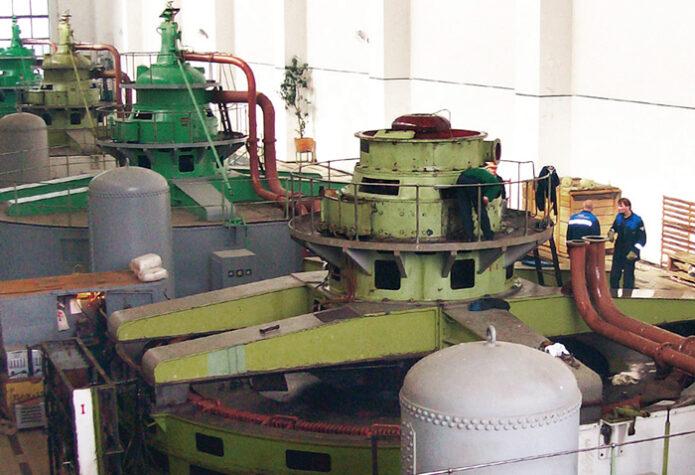Technologies to tame Vuoksi’s high water

Tapping the power of the River Vuoksi on the Karelian Isthmus has been of strategic importance for both Russia and Finland for decades. The NIB-financed capacity increase of the hydropower plant cascade on the river will benefit both its operator, Russian TGC-1, and its Finnish neighbours just few kilometres away.
Eight hydro turbines at the Svetogorskaya and Lesogorskaya power plants on the beautiful River Vuoksi on the Karelian Isthmus have long passed their retirement age. The Russian Territorial Generating Company No 1 (TGC-1) is revamping two hydropower plants built more than 70 years ago. The turbines, four in each plant, are being replaced with new ones. NIB has co-financed the investment project with a seven-year EUR 30 million loan to TGC-1, which cover approximately one fifth of the total project costs.
“This is the first renovation of the generation equipment on the Vuoksi cascade plants,” says Denis Zimin, Chief Engineer of the cascade.
“The turbines and generators have had a much longer than average lifetime for a hydropower plant turbine. But now it’s time to increase the capacity and renew the plants.”
“It takes about a year to replace one turbine and a generator. We started the project in 2008 on both power plants to keep it as short as possible and have one generator in repair at a time on each plant,” Mr Zimin explains.
The new equipment and rebuilt water channels will help increase the capacity of the hydropower plants from the current 187 MW to 240 MW once the final turbine is replaced in late 2013.
Another benefit of the renovation is that the increased capacity will eliminate the idle flow of water. It will help improve the regulation of the levels of upstream water. This is very important for hydropower plants on the Finnish side of the border.
“The upstream water level can easily get very high during seasonal floods, which happen here very often and can last for months. If the upstream is too high, our Finnish neighbours get no pressure,” Mr Zimin continues.
To compensate for the stoppages due to the insufficient throughput capacity on the Vuoksi cascade, TGC-1 supplies up to 600 MWh of electric power to the Finnish grid every year.
The project also involves equipment deliveries from NIB’s member area manufacturers. The power plants are now equipped with ten switchgear panels manufactured by ABB Sweden and a production controlling system supplied by Finnish Metso Automation.
“The state-of-the-art technologies are key to further automating the power generation. We are planning complete automation of the Lesogorskaya power plant in few years’ time. This will be a unique experience,” says Mr Zimin.
On the environmental side, the new turbines and generators substantially reduce the use and eliminate the spillage of hydraulic oil.
“The cascade plants became the first ones in the TGC-1 network to receive the ISO 14000 environmental management certificates three years ago. We’ll be audited for the renewal of the certificate later this year,” Mr Zimin adds.
The River Vuoksi has long been attractive for tapping hydropower. Running 152 kilometres from Lake Saimaa in Finland into Lake Ladoga, the river descends 72 metres from source to mouth. The first dams were built here in the late 19th century to supply electricity to St. Petersburg, then Russia’s capital city, and power up emerging industries on the Karelian Isthmus.
Initially, the two power plants were designed before the Second World War to meet the quickly growing demand of the then southeast region of Finland, including Viipuri, one of Finland’s major cities at the time, and Enso, the home of a large paper mill, still in operation in present-day Svetogorsk.
The Ruohiala power plant, now Lesogorskaya, was launched back in 1937. The construction of the Enso plant was not complete when the works were interrupted by the war that drew a new state border. The Enso and Ruohiala plants ended up on the Soviet side, now Russia. Once completed in the late 1940s, the plants fed all the generated power to Finland because the economy of the area was largely in ruins.
The cascade still feeds between one-third and a half of its output to the Finnish side of the border. The electricity imported from the Vuoksi cascade power plants comprises 0.5% of the annual power consumption in Finland, and is normally used for balancing capacity in the Finnish grid.
TGC-1 is one of the largest electricity and heat generating companies in the northwest region of Russia. Its generation assets include 55 hydroelectric and cogeneration power plants. The company is co-owned by Russian energy giant Gazprom and the Finnish power producer Fortum.
